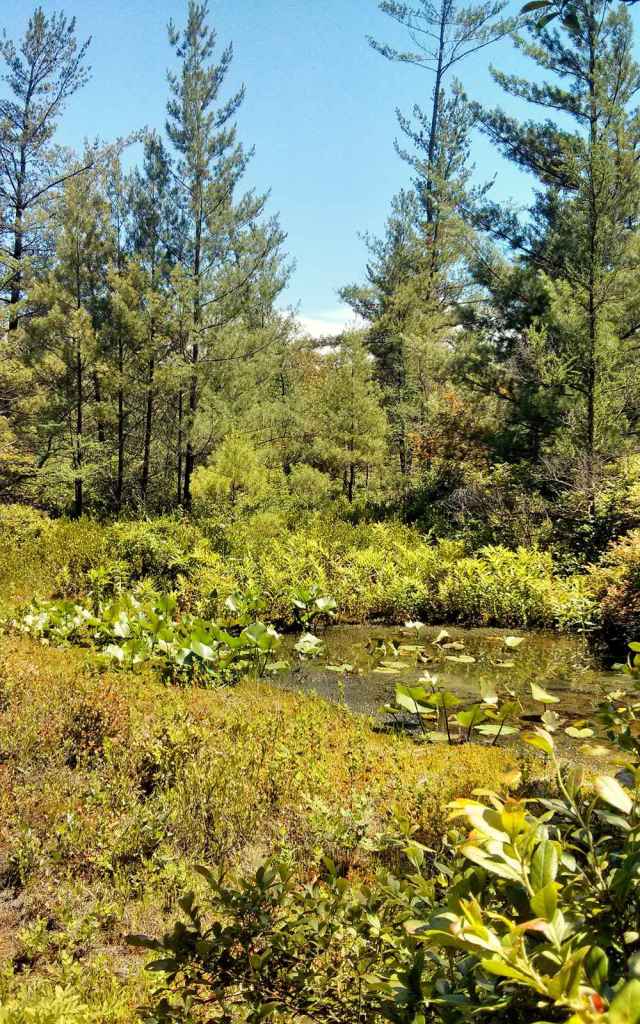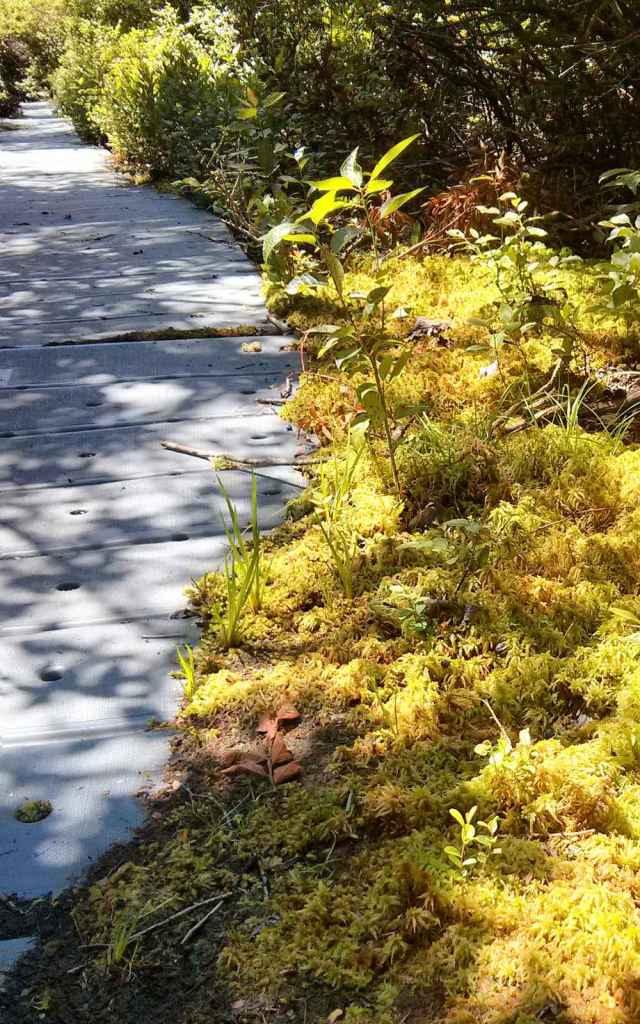Picture this. You’re surrounded by wooded dunes. You’re standing in the warm mid-day sun in July on a plastic boardwalk. Under the boardwalk is eight feet of moss floating on up to 60 feet of water. You’re surrounded by plants that instead of being eaten, would rather eat you. Welcome to Pinhook Bog.
Pinhook bog is a part of the Indiana Dunes National Lakeshore, and is the last quaking bog in Indiana according to the National Park Service. Formed in a kettle during the last ice age, the bog has no water flowing in or out. Instead water enters through rainfall and exits through evaporation.

Because the water is stagnant, sphagnum moss forms on the surface. As years pass, the thickening layer of moss begins to support other plants, among them several carnivorous varieties (pitcher plant, sundew, and bladderwort). Currently, the bog supports many shrubs and small trees including blueberry, tamarack, and poison sumac*. This mat of sphagnum moss comprises approximately 1/4 of the unit’s 580 acres.

You can visit Pinhook Bog at any time, but the thick mats of sphagnum moss are fenced off and open only with a park ranger in order to protect the rare plant species. The Sunday afternoon we visited just happened to be during an “open house” which the NPS offers once per month during summer months. Visits during other times must be arranged in advance. Contact either Indiana Dunes National Lakeshore headquarters or Indiana Dunes State Park visitors center for more information.

Further Reading:
Wikipedia: http://en.wikipedia.org/wiki/Pinhook_Bog
Duneland.com: http://www.duneland.com/aer/indiana-dunes/pinhook-bog.html
“The Beacher” Michigan City Weekly Newspaper article (2006): http://www.thebeacher.com/pdf/2006/BeacherJul20.pdf
*Wikipedia describes poison sumac as “far more virulent than its relatives poison ivy and poison oak” and ” the most toxic plant species in the United States.”

Leave a comment